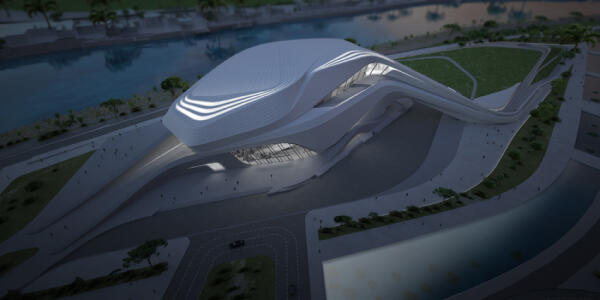
By Edson Baraukwa | Africa Guardian
Rabat is home to Africa’s largest theater, a remarkable structure that cost nearly €200 million, but despite being completed three years ago, it remains closed, leaving local officials confused and frustrated.
The building, with its futuristic, white, and rounded design, has become an architectural landmark in Morocco’s capital. Designed by the renowned Zaha Hadid, the first female winner of the prestigious Pritzker Prize, the theater covers an impressive 25,000 square meters. Tourists admire its bold design, while locals see it as a symbol of their city’s modern identity, standing in stark contrast to the nearby Hassan Tower, a relic of an 800-year-old mosque.
Since summer, the theater has been featured on Morocco’s 20-dirham banknote, representing the nation’s “rich socio-cultural development,” as described by the country’s central bank. However, despite this recognition, the grand theater, which boasts a capacity of 1,800 seats and is hailed as “the largest in Africa” by the Moroccan press, has yet to open its doors.
The official inauguration, expected to be presided over by King Mohammed VI, has been the subject of much anticipation and repeated delays. Initially slated to open in 2019, the theater’s debut has been postponed multiple times, with speculated opening dates ranging from late 2021, following the pandemic, to various points in 2022 and 2023. But the long-awaited royal visit to mark the grand opening has not yet materialized.
As 2024 approaches, uncertainty continues to surround the theater’s future. Local officials express frustration, with one municipal source noting that even city representatives are being left in the dark regarding the official opening date. Many officials declined to comment on the issue, or requested anonymity, signaling the sensitive nature of the matter. The project, reportedly, is closely overseen by the palace, with King Mohammed VI personally selecting Zaha Hadid’s design before her passing in 2016. The theater was one of her final works.
The extensive delays and cost overruns, which have pushed the theater’s final cost to €190 million, have drawn attention, particularly given its significance as a cultural facility. The grand theater was meant to open in 2019, but now, five years later, it still stands unused, awaiting the day it can finally welcome its first audience.
___
